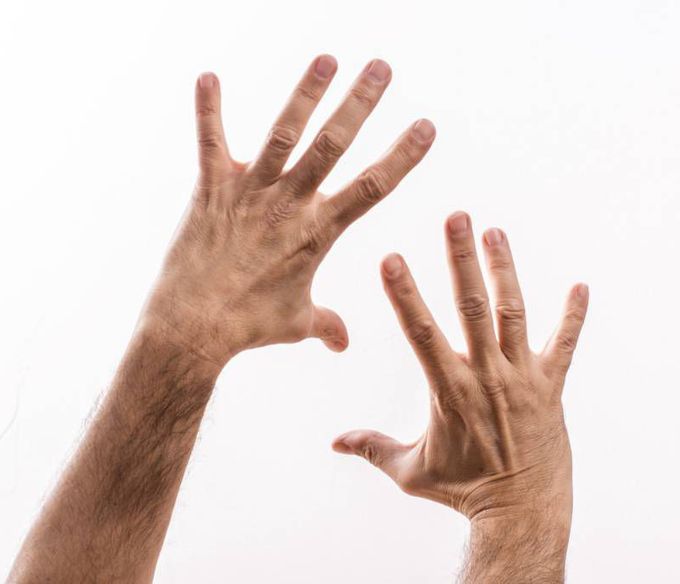


ALIEN HAND SYNDROME
CASE DESCRIPTION A 77-year-old woman with chronic atrial fibrillation had her anticoagulation stopped temporarily for spine surgery. No bridging with low-molecular-weight heparin was done. Two days later, while watching television, she noted her left hand flinging across her visual field. Her left hand stroked her face and hair without her will. She got terrified. Her attempts to control the left hand with the right hand were unsuccessful. She did not have any control of the left hand for almost 30 minutes as it continued to make purposeful movements. She later noted that her left upper limb was numb and slightly weak when she regained control. Her husband helped her to the car to take her to the hospital, and he noted that she was dragging her left leg while walking. In the hospital, a computed tomography (CT) scan and magnetic resonance imaging (MRI) of the brain showed acute infarcts in both parietal lobes. Transthoracic and transesophageal echocardiograms did not show any evidence of thrombus. She gradually gained normal control of the left side over the next 6 hours. A diagnosis of stroke possibly due to cardioembolism was made. Her anticoagulation was resumed, and she was discharged home with advice to maintain anticoagulation at all times. DISCUSSION Alien hand syndrome, or Dr. Strangelove syndrome, is an interesting situation in which a person loses control of his or her hand, which starts to act independently. It describes involuntary complex goal-directed activity of one limb. Recent usage of the term “alien hand” is more liberal and requires having observable involuntary motor activity along with the feeling that the limb is foreign or that it has a will of its own (2). The syndrome has been reported after surgery on the corpus callosum and with brain tumors, aneurysms, degenerative diseases of the brain, and uncommonly stroke. Alien hand as a manifestation of cardioembolic stroke is extremely rare, with only a few cases reported in the literature. Lesions implicated in causing alien hand syndrome include those in the corpus callosum and/or posterior parietal cortex, supplementary motor area, and the anterior cingulate cortex. Functional MRI has been used to study brain activity in patients with alien hand syndrome (3). In normal individuals, initiation of motor activity shows activation of multiple extensive neural networks. However, in patients with alien hand syndrome, only isolated activation of the contralateral primary motor cortex is observed (3). It has been proposed that lesions in the parietal cortex result in isolated activation of the contralateral primary motor area due to its release from the intentional planning systems. Damage to the parietal cortex can also cause lack of awareness of movements due to loss of proprioceptive feedback or left hemineglect (3). The combination of these factors results in initiation of spontaneous movements without the patient's knowledge or will. Alien hand syndrome has been reported to be associated with several abnormal involuntary movements when different regions of the brain, like the corpus callosum, parietal region, or frontal region, are involved. It can be classified into at least four categories: 1) diagnostic dyspraxia/intermanual conflict (when one hand performs actions contrary to the other hand); 2) alien hand sign (a subjective feeling that the hand is not one's own); 3) syndrome of anarchic hand (when the affected hand performs goal-directed activity not under the will of the person); and 4) supernumerary hand (a feeling of having an extra limb) (4). Another type of alien hand is the levitating hand, where the affected limb tends to levitate without volitional action (4). Alien hand might manifest as a self-groping behavior and self-oppositional behavior (5). Autocriticism has also been reported, with the person slapping the alien hand with the normal hand. The person loses control of the affected hand as if it is being controlled by an external force. The alien hand might grab onto things and the person might have to use the other limb to release the objects from it. At extremes, the alien hand has been reported to even suffocate the patient. There is no established treatment for alien hand. It has been reported to last for several days to several years. Alien hand as a manifestation of cardioembolic transient ischemic attack has been reported only once based on our review (6). The extremely short duration of alien hand in this case report (30 minutes) is the shortest reported duration of this phenomenon recorded.

